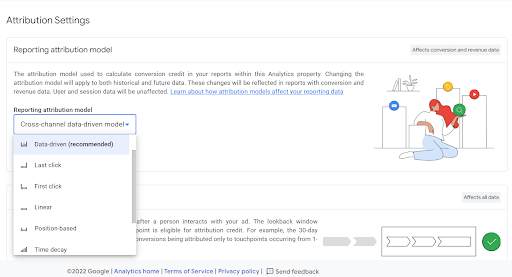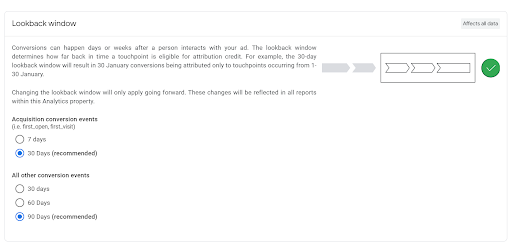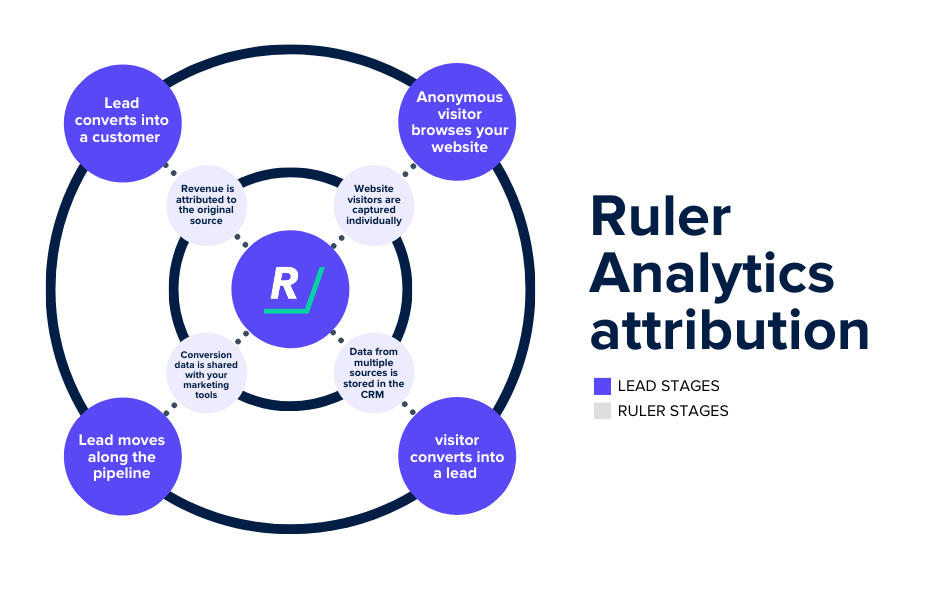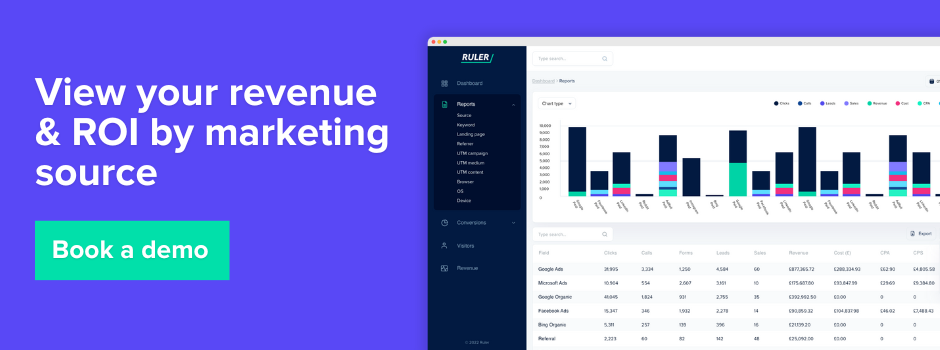Learn how to prove your impact and optimise your results on pay-per-click by tracking ROAS with Google Analytics 4
Your paid campaigns are only as good as you optimise them.
Chances are, you feel immense pressure as a paid marketer to continue to drive value from your PPC campaigns.
And it’s no surprise.
There’s more ad saturation than ever before and customer journeys are getting more and more complex.
What does that result in?
A reduced view of the impact of your campaigns and their effect on the bottom line.
Tracking the return on ad spend of your paid campaigns in Google Analytics 4 is vital to see a channel-by-channel comparison.
You can see how your paid channels match up to each other and to other organic channels, plus how channels work together to drive revenue.
In this blog, we’ll run you through:
💡 Pro Tip
See how Ruler can track your visitors’ journey, pinpoint the ads that drive revenue, and prove the true ROAS of your ad platforms. With these insights, you can make smarter, data-driven decisions to boost your marketing effectiveness.
Book a demo and let Ruler show you the truth
ROAS, or return on ad spend is the metric used to track the impact of your paid advertising on your bottom line.
Related: Complete guide to return on ad spend and how to track it
Similar to return on investment, return on ad spend looks specifically at how much revenue you generate compared to how much you spend on paid channels.
It’s calculated simply by dividing the revenue from your ads by the cost invested, which you then multiple by 100.
Ok, so we know what the metric means, but what is ROAS in Google Analytics?
You can calculate ROAS within Google Analytics once you’ve integrated your Google Ad accounts to your Google Analytics account.
Remember the ROAS metric in GA is only available within the Google Ads report.
It’s calculated via the following formula:
(ga:transactionRevenue + ga:goalValueAll) / ga:adCost
Related: How to measure the impact of your paid ads
In GA4, you don’t have access to the Cost Analysis report or the Google Ads report.
Instead, you just have one overall advertising report.
This is similar to the Cost Analysis report in the sense that you can upload cost data and that it amalgamates your paid media channel stats in one central hub.
To view it, head to Advertising, and then select All channels under Performance.
Here, you can view all of your paid marketing channels by the following metrics:
Remember, this data will be applied automatically to the data-driven attribution model built by Google Analytics.
You can change this by heading to Admin and under Property selecting Attribution Settings.
Here, you’ll be able to choose your preferred attribution model type.

Google advises data-driven but make sure you choose whatever model type suits you best. You can change this model as you like as it will apply to both historical and future data.
On the topic of attribution, it’s worth going into further detail.
Google Analytics 4 is offering more capabilities for marketers to apply attribution data to their marketing numbers.
But remember, Google Analytics is not a marketing attribution tool.
This is where we come in.
Ruler is a marketing attribution tool serving clients with reliable lead and revenue data for all of their marketing channels. We’ll get into how we can help you with attribution shortly. But first, it’s worth remembering that Google Analytics can go part of the way to help you better attribute your marketing impact, but it has its limitations.
Related: Limitations of Google Analytics
As far as attribution is concerned, these limitations can be whittled down to:
Let’s break these down into a bit more detail.
Google Analytics 4 only offers short options for lookback windows.
For acquisition conversion events you can either choose:
How often do you make a purchasing decision in a month? Particularly for high-value items or in the B2B space.
This limitation means you’re likely going to be unable to attribute closed sales back to your marketing activities.
For other conversion events you can choose between:
But these aren’t for acquisition-based conversions. They’re likely to be used for lead conversions, which although useful is still not ideal for accurate reporting.

Note: Remember that for both of these lookback windows it will only affect future data, so be sure to set it as soon as possible.
Again, Google Analytics 4 is making moves to better track customer journeys. But they are notoriously difficult to track.
Related: The easy way to view customer journeys
GA has strict privacy policies to adhere to meaning it can be hard for its users to get any clear indication of individual customer journeys.
While GA4 does offer the conversion path report, this still buckets users and averages metrics. It will tell you a total revenue plus average touchpoints and time to close.
While this is helpful information, it is still top-level meaning you can’t get much in the way of deeper insight on your marketing efforts.
Google anticipates a lot of data being unattributable too.
If you’re overwhelmed by the amount of data you have from app to app, and you’re looking for a simple solution to track, evidence and optimise your marketing then you’re in luck.
Ruler is the leading attribution tool supporting marketers to aggregate data and provide visitor-level insights to help revolutionise their marketing strategy.
How Ruler works is simple.
A user visits your website for the first time.
With Ruler’s tracking code on your website, Ruler can pull key marketing information about this user and store it under their personal cookie data.
As that user revisits your website, Ruler will continue to merge data held to create a digital journey.
Let’s say that this user decides to convert and fills in a form on your site.
At this point all of that data Ruler is holding will be fired over to your CRM for your sales team to check in on.
When your sales team closes that lead into a customer, Ruler will then scrape the revenue data held against that person in your CRM and fire it to your marketing analytics tools.
There, it will be automatically attributed to the influencing channels and campaigns.

This seamless integration pushes and pulls the data you already have in your apps to where you need it most.
It means you can bypass the endless data integration and upload and let Ruler do all the hard work for you.
Plus, one quick login to Ruler will give you access to reports like this one.
A central dashboard to view your channels, campaigns, ads and even keywords by key metrics like:
So if you’re looking for an easier way to integrate your marketing data into Google Analytics 4, look no further.
Book a demo of Ruler to see it in action, or read more about everything you can discover in the app.
